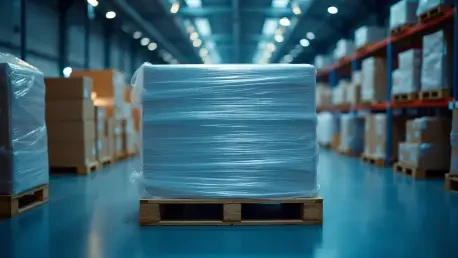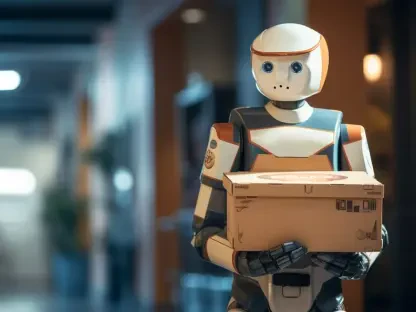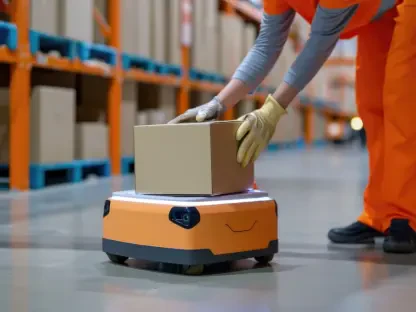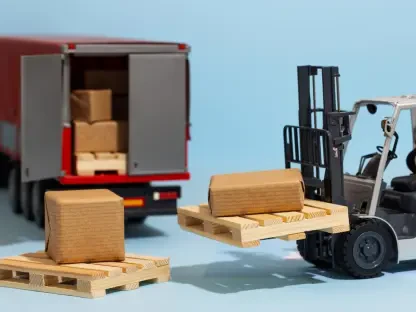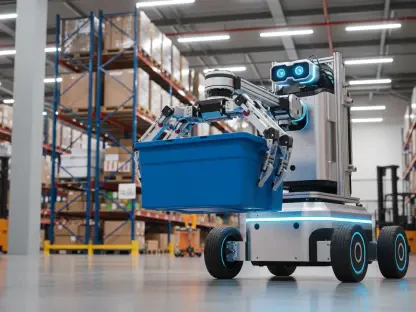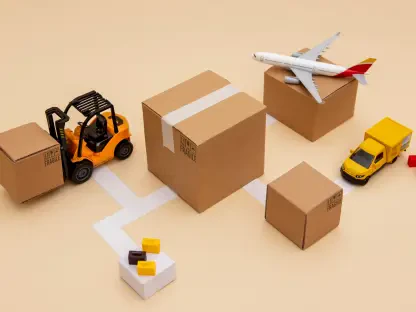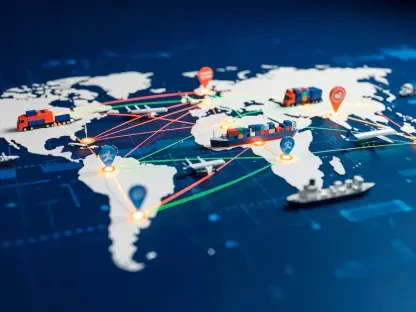In an ever-evolving logistics industry, innovation in packaging technology is crucial for enhancing efficiency and sustainability. In this interview, Oliver Sinclair sits down with Rohit Laila, an expert with decades of experience in logistics, to discuss Kite Packaging’s new line of spiral wrapping machines and eco-friendly films. Rohit shares insights on how these innovations can reshape supply chains and reduce environmental impact, while highlighting the role of technology in modern logistics.
Can you describe the new spiral wrapping machines that Kite Packaging has introduced?
Kite Packaging’s new line of spiral wrapping machines is a significant advancement in the industry. These machines, particularly the Robopac Compacta range, utilize a rotating ring mechanism to apply stretch film in a controlled spiral fashion. This design is perfect for wrapping long or irregularly shaped items, offering high-speed and consistent results with minimal manual involvement.
What are the main benefits of using these spiral wrapping machines compared to traditional methods?
The spiral wrapping machines bring several benefits over traditional methods. They significantly reduce manual labor, allowing operators to focus on other tasks. The automation ensures fast, consistent wrapping that minimizes material waste. Moreover, integrating these machines into existing production lines is seamless, enhancing productivity without requiring extensive infrastructure changes.
How do the Robopac Compacta spiral wrappers work, and what makes them suitable for complex loads?
The Robopac Compacta spiral wrappers operate using a rotating ring mechanism that applies stretch film in a spiral pattern. This is controlled through an intuitive foot pedal, enabling ease of operation. Their design is particularly suited for complex loads due to the consistent application of film, which ensures that even irregularly shaped items are securely wrapped with minimal risk of damage during transit.
Could you explain the differences among the four models: Compacta 4, 6, 9, and 12?
Each model in the Compacta line varies primarily in film width and application versatility. The Compacta 4, 6, 9, and 12 offer different levels of flexibility, catering to varying operational needs. This differentiation ensures that companies can choose a model that aligns best with their specific packaging requirements while maintaining high efficiency and material conservation.
How does the integration of spiral wrapping machines affect production lines?
Integrating spiral wrapping machines into production lines streamlines operations significantly. They are designed to work seamlessly with existing systems, supported by infeed and outfeed conveyors that facilitate continuous workflow. This integration helps to boost productivity while reducing the need for manual oversight, thus optimizing resource allocation.
What role does the intuitive control panel play in operating these machines?
The intuitive control panel allows operators to program custom wrapping cycles with ease. This feature simplifies the operation, enabling quick adjustments to accommodate different packaging needs without extensive training. The user-friendly interface ensures that operators can efficiently manage the wrapping process, contributing to increased throughput and reduced downtime.
How do the automatic clamping and cutting systems improve the wrapping process?
The automatic clamping and cutting systems enhance the wrapping process by reducing manual intervention and time. Once the wrapping cycle is complete, these systems automatically secure and cut the film, making for a quick and efficient process. This automation not only improves speed and consistency but also reduces potential errors that can occur with manual cutting.
Can you talk about the eco-friendly features of the new spiral wrapper films?
The eco-friendly features of these films are a step forward in sustainable packaging. They are developed to minimize environmental impact while maintaining durability and performance. The films consist of 30% recycled content, aligning with the Plastic Packaging Tax requirements and reflecting an industry shift towards reducing plastic waste without compromising strength.
Why is incorporating 30% recycled content in the films significant for Plastic Packaging Tax compliance?
Incorporating 30% recycled content in the films is crucial for meeting compliance with the Plastic Packaging Tax, which encourages manufacturers to integrate more recycled materials into their products. This initiative not only helps companies avoid additional costs but also promotes sustainability practices that are increasingly important in today’s environmentally conscious market.
How do the specifications of the different films cater to various wrapping needs?
The film specifications are designed to offer flexibility in packaging solutions. With variations in micron thickness and dimensions, businesses can select the right film for specific loads and wrapping requirements. The films are engineered for stretch efficiency and load security, ensuring that they meet various demands while minimizing material usage.
What environmental benefits do these eco-friendly films provide?
These eco-friendly films significantly reduce the environmental footprint of packaging operations. By incorporating recycled content, they help decrease the reliance on virgin materials, lowering carbon emissions associated with production. Additionally, their design reduces material waste, contributing to more sustainable logistics practices.
In what ways do the Compacta machines offer a space-saving solution?
Compacta machines are designed with a minimal footprint, making them suitable for operations with limited space. Despite their compact size, they do not compromise on efficiency or features, offering all the benefits of larger systems in a smaller package. This design allows businesses to enhance their wrapping capacity without necessitating significant rearrangements or expansions.
What advantages do these machines provide for businesses looking to increase throughput without significant changes to infrastructure?
Businesses can increase throughput effectively with these machines, as they integrate seamlessly with existing production setups. Their automated systems enhance speed and consistency in wrapping operations without the need for additional infrastructure investments. This efficiency translates to improved productivity and a better return on investment.
How is the training process for operating these machines simplified?
The training process is streamlined due to the machines’ user-friendly design and intuitive controls. Most operators can quickly become proficient, reducing training time and costs. This simplicity enables businesses to deploy the machines swiftly, leading to faster operational improvements and less disruption to daily activities.
How does the combination of spiral wrappers and eco-conscious films contribute to a more sustainable operation?
The synergistic combination of spiral wrappers and eco-conscious films creates a more sustainable operation by reducing manual labor, minimizing material waste, and utilizing recycled content. Together, they lower the environmental impact of packaging processes and align with broader sustainability goals, which is crucial for companies committed to reducing their carbon footprint.
What makes Kite Packaging stand out in the warehousing and logistics industry?
Kite Packaging distinguishes itself through its commitment to innovation and sustainability. Their employee share-owned structure fosters a culture of collaboration and dedication to success, while the R&D team’s relentless pursuit of new solutions keeps them at the forefront of the industry. This approach allows Kite to deliver customer-driven innovations that meet the dynamic needs of warehousing and logistics.
How does Kite’s employee share-owned structure impact its approach to innovation?
The employee share-owned structure drives a strong sense of ownership and accountability among Kite’s team, fostering innovation. This model encourages employees to invest in the company’s success, leading to creative solutions and improvements that benefit both the business and its customers.
What is the role of Kite’s R&D team in developing new products?
Kite’s R&D team is pivotal in the development of new products, constantly exploring new technologies and materials to enhance packaging solutions. Their work includes innovating around sustainability, efficiency, and user-friendliness, ensuring that Kite remains a leader in addressing evolving industry challenges.
How does Kite Packaging ensure that it remains a trusted partner for its customers?
Kite Packaging maintains its reputation as a trusted partner by consistently delivering high-quality products and services that address customers’ needs. Their focus on sustainability, innovation, and customer support builds enduring relationships and ensures they are meeting the demands of modern logistics challenges.
How can interested customers learn more about Kite’s spiral wrapping solutions or request a demonstration?
Customers interested in Kite’s spiral wrapping solutions can visit their website or contact their sales team to learn more about the product offerings. They also have the opportunity to request demonstrations, which provide a firsthand look at how these advanced systems can integrate into and enhance their packaging operations.
